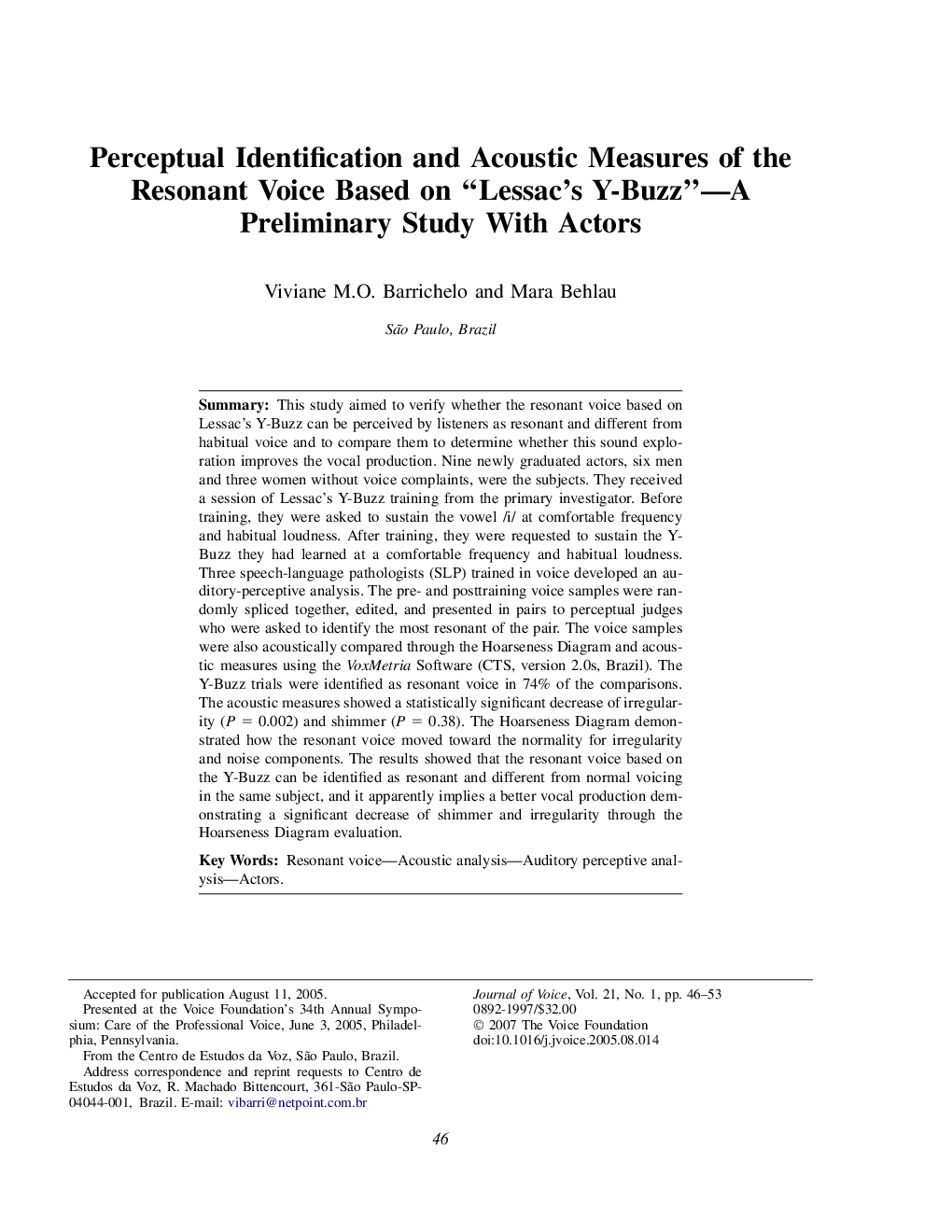| Article ID | Journal | Published Year | Pages | File Type |
|---|---|---|---|---|
| 1102916 | Journal of Voice | 2007 | 8 Pages |
SummaryThis study aimed to verify whether the resonant voice based on Lessac's Y-Buzz can be perceived by listeners as resonant and different from habitual voice and to compare them to determine whether this sound exploration improves the vocal production. Nine newly graduated actors, six men and three women without voice complaints, were the subjects. They received a session of Lessac's Y-Buzz training from the primary investigator. Before training, they were asked to sustain the vowel /i/ at comfortable frequency and habitual loudness. After training, they were requested to sustain the Y-Buzz they had learned at a comfortable frequency and habitual loudness. Three speech-language pathologists (SLP) trained in voice developed an auditory-perceptive analysis. The pre- and posttraining voice samples were randomly spliced together, edited, and presented in pairs to perceptual judges who were asked to identify the most resonant of the pair. The voice samples were also acoustically compared through the Hoarseness Diagram and acoustic measures using the VoxMetria Software (CTS, version 2.0s, Brazil). The Y-Buzz trials were identified as resonant voice in 74% of the comparisons. The acoustic measures showed a statistically significant decrease of irregularity (P = 0.002) and shimmer (P = 0.38). The Hoarseness Diagram demonstrated how the resonant voice moved toward the normality for irregularity and noise components. The results showed that the resonant voice based on the Y-Buzz can be identified as resonant and different from normal voicing in the same subject, and it apparently implies a better vocal production demonstrating a significant decrease of shimmer and irregularity through the Hoarseness Diagram evaluation.
